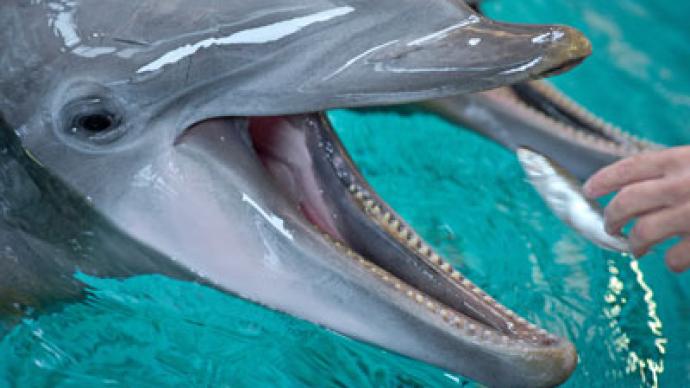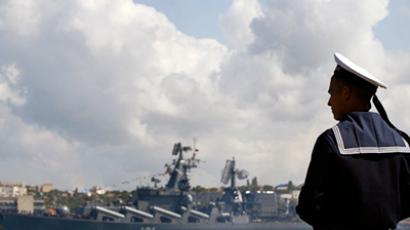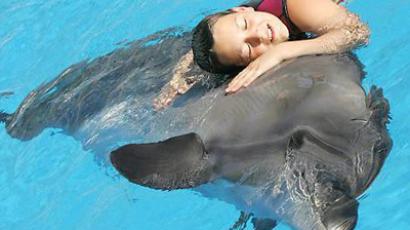Flipper on a mission: Ukraine resuming dolphin combat training

A Soviet program of dolphin military training is reportedly being revived in Ukraine. The unit's tactical objective will be search operations and patrolling the waters near the Russian and Ukrainian Naval base in Sevastopol.
In the Soviet Union, dolphin training started in 1965, while a special naval dolphinarium was initiated in 1973 in Sevastopol, the homeport of the USSR's Black Sea fleet. Bottlenose dolphins (Tursiops truncates), who naturally inhabit the Black Sea, were chosen as future subversives, set to infiltrate enemy lines, mine warships and counteract military swimmers. For that purpose dolphins were properly armed with knives and underwater pistols fixed on their heads and specially designed baldric for mine carriage.Later, the center also obtained dolphins of other species, reportedly from the White Sea of the Arctic Ocean and from the Pacific of Russia’s Far East. According to some sources in the Soviet Union, there were specialists training seals, sea lions and even orcas for the same tasks.
Once the Soviet Union split up, Sevastopol's naval dolphinarium lost state sponsorship and had to survive on its own financing. For dolphins, who sometimes can live as long as 40 years, that probably turned out for the better, as the facility became a rehabilitation center for disabled children. The ironic side was that underwater counter-warfare experts trained to kill spent their retirement years caressing children in return for daily fish rations. But a soldier always remains a soldier, and reportedly some military training continued at the facility through all those years.Now the time has come for the dolphinarium return to the naval track, as no frogman can beat dolphins in speed, nor underwater wayfaring and, some suspect, even in general intellectual capabilities. The first unit of ten young dolphins has already successfully fulfilled sea search exams in Kazachiya Bay in Sevastopol, finding items ‘lost’ on the sea bottom and activating mark buoys to signal that the job is done. The next stage of training will see young dolphins learning to patrol a certain water area and protect it from underwater intruders. There is no information available on whether the dolphins are being trained to kill humans, but reports suggest that all previous attempts to use dolphins for evil purposes had failed, as dolphins are not able to attack people, nor are they ready to sacrifice their own lives.
History of military sea mammals
Historically, animals were used in human warfare in various forms since ancient times, but Russia was the first to make use of sea mammals. In 1915 famous Russian animal trainer Vladimir Durov offered the General Staff of Navy to train sea lions. His plan never came to be; in 1917 all twenty animals he was training were poisoned and died. Later, White Army General Belyaev destroyed all the documentation, so the Bolsheviks would not lay hands on the information.Yet some 50 years later, the Soviet Union established its sea mammal program at a naval base in Sevastopol. Some 80 scientific centers and development labs were working for the dolphinarium. It was Soviet military animal trainers who first performed lifts of their sea mammals to combat zones.
By 1991, over a hundred of sea mammals were in the program – including dolphins, sea lions, seals and beluga whales. The animals were capable of finding mines, mining submarines and locating spies. In the US, a combat dolphins program also dates back to the 1960s. Currently the Navy Marine Mammal Program has its training facility in San Diego, California. Reports have it that 75 trained dolphins actively participated in the first and second Gulf Wars, searching sea mines in the Persian Gulf. The US always denied their program, which is said to train dolphins to kill humans and deliver mines to enemy ships.As of today there are only two places in the world where dolphins are being trained for military use: the Sevastopol dolphinarium and the Mammal Program in San Diego.














